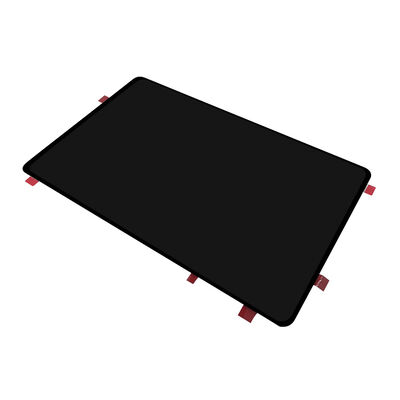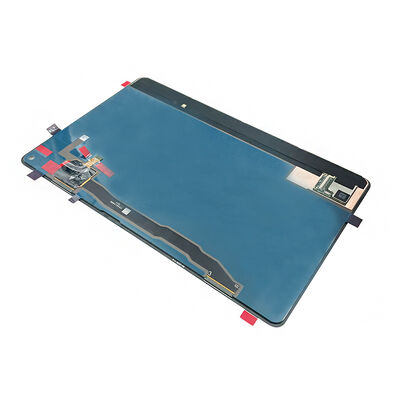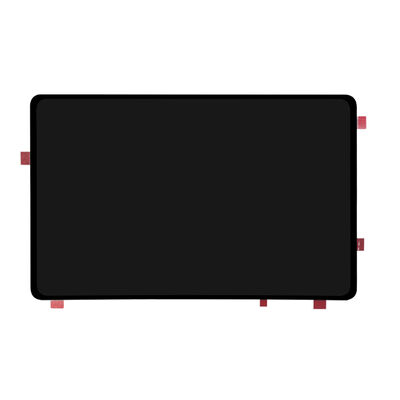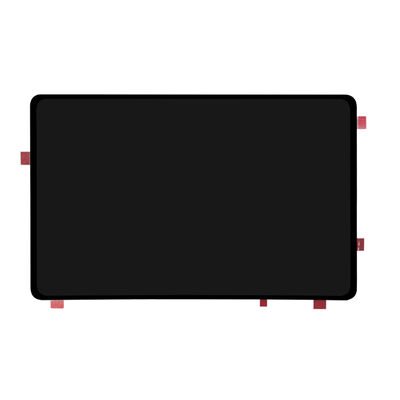Tous les produits
-
Affichage d'affichage à cristaux liquides TFT
-
Affichage de TFT d'écran tactile
-
Affichage rond de TFT
-
ecran couleur de tft
-
module amoled d'affichage
-
Micro OLED Affichage
-
Type TFT de barre
-
Affichage TFT carré
-
Affichage d'affichage à cristaux liquides d'intense luminosité
-
Affichage LCD COB
-
Lumière du soleil TFT lisible
-
Affichage d'UART TFT
-
Module d'affichage d'affichage à cristaux liquides
-
Affichage de PMOLED
-
affichage d'epaper
-
Affichage numérique de LED
-
Écran tactile capacitif
11.2 Inch High Resolution AMOLED Display Module with oncell touch, 2560*1536 Dots and 450c/d Brightness
| Lieu d'origine | Chine |
|---|---|
| Nom de marque | HuaXin |
| Certification | ISO14001/ ISO9001/IATF16949 |
| Numéro de modèle | HX20QBC73.A |
| Documents | HX20QBC73.A SPEC.pdf |
| Quantité de commande min | 180 |
| Prix | $108 |
| Détails d'emballage | Blister + boîte en mousse + sac à bulles + carton intérieur + carton maître |
| Délai de livraison | 6 semaines ~ 8 semaines |
| Conditions de paiement | T/T |
| Capacité d'approvisionnement | 50k par mois |

Contactez-moi pour des aperçus gratuits et des bons.
WhatsApp:0086 18588475571
wechat: 0086 18588475571
Skype: sales10@aixton.com
Si vous avez n'importe quel souci, nous fournissons l'aide en ligne de 24 heures.
xDétails sur le produit
| Technologie d'affichage | Écran AMOLED HD | Nom | Affichage LCD OLED |
|---|---|---|---|
| Taille | 11.2" | Résolution | 2560RVB*1536 |
| Luminosité | 450c / j | Interface | MIPI 2 ports |
| Conduite en circulation | RM692H0 |
Vous pouvez cocher les produits dont vous avez besoin et communiquer avec nous dans le babillard électronique.
Description de produit
HX20QBC73.A is 11.2 inch amoled display module with oncell touch Display color: 1.07B (RGB x 10 bits) and Display format: 11.2” (2560RGBx1536) and Pixel arrangement: Real RGB
Display Interface: MIPI 2-port D-PHY TP Interface: SPI Driver IC : RM692H0 , Touch screen: On-cell; Touch IC: GT6975P
Product Parameter
| Part No. | HX20QBC73.A |
| Display Size | 11.2 inch AMOLED display |
| Outline Size (mm) | 249.22*154.08 |
| AA Size (mm) | 244.22*146.53 |
| Resolution | 2560RGB*1536 |
| Interface | MIPI 2-port |
| Brightness | 450c/d |
| View Angle | all |
| Driving IC | RM692H0 |
| Touch screen | On-cell |
Product Picture
![]()
![]()
![]()
![]()
Drawing & Pin Definition
OLED Product Knowledge
OLED Advantages:
- Lighter and thinner than LCDs
- High contrast ratio
- High color saturation
- Lower power consumption
OLED Disadvantages:
- AMOLED is more expensive than LCD and TFT
- Lifetime is shorter than LCD and TFT
Company Information
Huaxin Advantage:
- Factory base located at inland city which has cost effective
- Most advanced new equipment which can keep quality stable
- Most processes using fully automatic equipment which has efficiency and stable quality
- Professional engineers and production leaders with 20+ years experience in LCD field
- Self design for customized product
Our Certificates:
- ISO14001
- ISO9001/IATF16949
- SGS of LCD module
Production Capacity
| Annual Production Capacity | 2021 (Current) | 2022 (Goal) | 2023 (Challenge) | 2024 (Challenge) | 2025 (Challenge) | Remark |
|---|---|---|---|---|---|---|
| LCD Production Capacity | 4.5 | 9 | 9 | 9 | 9 | Unit: thousands of logarithms/Day |
| LCM Production Capacity | 70 | 150 | 300 | 450 | 450 | Unit: Thousand piece/Day |
| Backlight Production Capacity | 100 | 200 | 300 | 500 | 500 | Unit: Thousand piece/Day |
| OLED Production Capacity | 10 | 20 | 30 | 40 | 50 | Unit: Thousand piece/Day |
Product Application
- Safety box & instrument
- Lock & smart home
- Transmitter & watch
- Watch & radio
- Collimator & navigator
AMOLED Display Characteristics
- Self-Emissive Pixels
- High Contrast Ratio
- Color Accuracy and Vibrancy
- Wide Viewing Angles
- Power Efficiency
- Thinness and Flexibility
- Fast Response Time
Power Efficiency Comparison
1. Power Consumption:
AMOLED displays consume power on a per-pixel basis, meaning that pixels displaying black or dark content consume very little power, while pixels displaying bright or white content consume more power. LCD and LED displays require a constant backlight that consumes power regardless of the displayed content.
2. Content Dependency:
AMOLED displays are more power-efficient for content with dark or black areas, as individual pixels can be turned off to save power. LCD and LED displays consume a relatively constant amount of power as the backlight remains active.
3. Brightness Control:
AMOLED displays can dynamically adjust pixel brightness for better efficiency in low-brightness scenarios. LCD and LED displays typically have fixed backlight brightness, resulting in higher power consumption.
4. Display Size:
AMOLED displays tend to be more power-efficient for smaller sizes as consumption scales with pixel count. Larger LCD/LED displays may require more power-hungry backlights, reducing efficiency compared to same-size AMOLED displays.
produits recommandés










